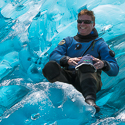There's nothing quite like capturing that perfect moment when shooting fast action underwater photography. Whether it's a sea lion or billfish swimming by at break neck speed or just a small jawfish poking its head out of the hole, timing is everything. Many cameras are better suited to shooting fast action, with high-end DSLRs being the best. But no matter what camera you are using, here are five tips to help you come away with the perfect shot.
[caption id="attachment_2517" align="aligncenter" width="600"]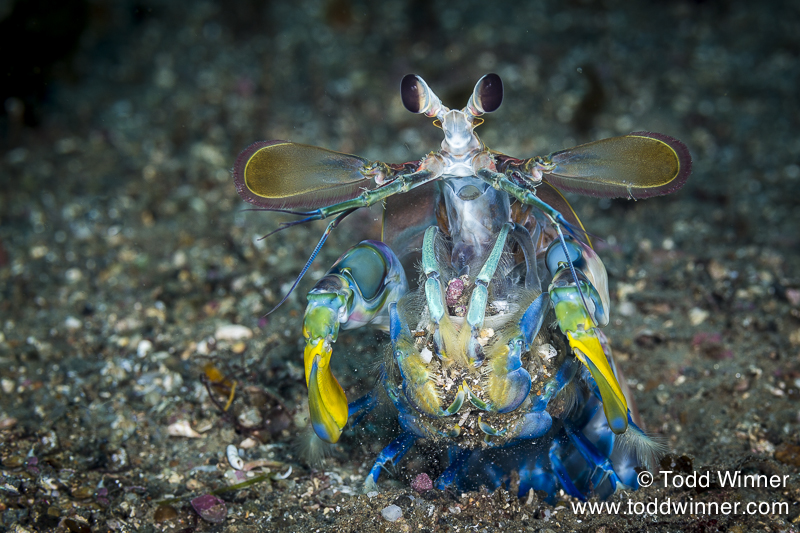 Mantis Shrimp cleaning out its burrow. Catalina Island, California[/caption]
Mantis Shrimp cleaning out its burrow. Catalina Island, California[/caption]
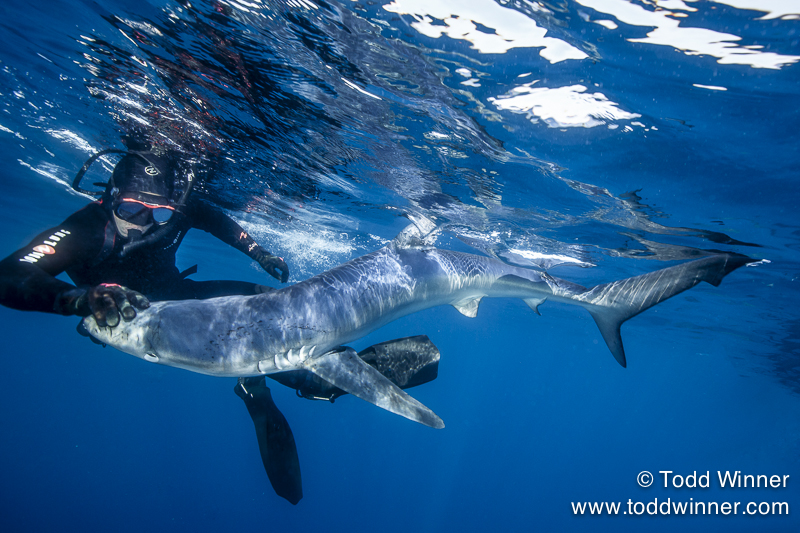 Shark Handler putting a blue shark into tonic immobility, California[/caption]
Continuous Shutter Setting your camera to take multiple images as you hold the shutter release down can give you a slight advantage when shooting fast action. As long as your strobes are set to a lower power they should be able to keep up with at least a few shots. Many cameras have both a high and low setting for continuous shutter. I find the low setting to be fast enough for most underwater shooting scenarios. Another advantage is that many strobes tend to still fire even if they have not completely recharged, but at a lower output, so you also get a bit of strobe bracketing by using this method.
[caption id="attachment_2516" align="aligncenter" width="430"]
Shark Handler putting a blue shark into tonic immobility, California[/caption]
Continuous Shutter Setting your camera to take multiple images as you hold the shutter release down can give you a slight advantage when shooting fast action. As long as your strobes are set to a lower power they should be able to keep up with at least a few shots. Many cameras have both a high and low setting for continuous shutter. I find the low setting to be fast enough for most underwater shooting scenarios. Another advantage is that many strobes tend to still fire even if they have not completely recharged, but at a lower output, so you also get a bit of strobe bracketing by using this method.
[caption id="attachment_2516" align="aligncenter" width="430"]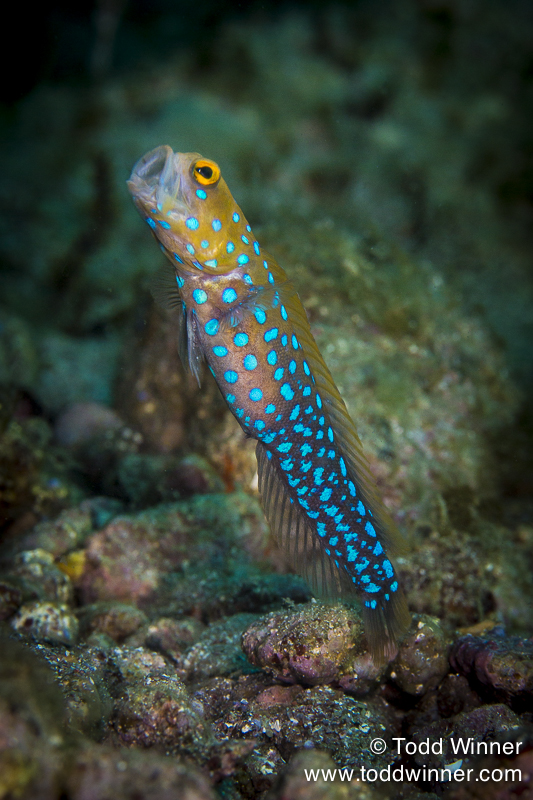 Blue Spot Jawfish Feeding[/caption]
Big Fast Memory Cards If you're worried about filling up your memory card you definitely need one with a larger capacity. How large will ultimately depend on your camera and shooting style. I typically use 32G cards with my Canon 5D Mark III. When you first take an image the file is stored in the cameras buffer, by using memory cards with a fast read and write speed your camera can clear the buffer faster so you can continue to shoot. They also make downloading to your computer much faster.
[caption id="attachment_2518" align="aligncenter" width="600"]
Blue Spot Jawfish Feeding[/caption]
Big Fast Memory Cards If you're worried about filling up your memory card you definitely need one with a larger capacity. How large will ultimately depend on your camera and shooting style. I typically use 32G cards with my Canon 5D Mark III. When you first take an image the file is stored in the cameras buffer, by using memory cards with a fast read and write speed your camera can clear the buffer faster so you can continue to shoot. They also make downloading to your computer much faster.
[caption id="attachment_2518" align="aligncenter" width="600"]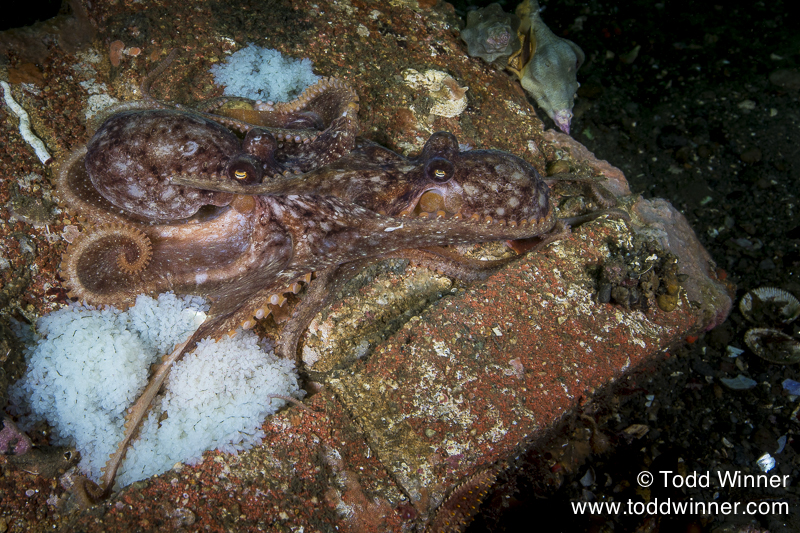 Octopus fight[/caption]
Multiple Autofocus Points When you're shooting larger subjects like sea lions or dolphins in clearwater, try using multiple autofocus points. It's not as precise as using a small focus point but it can be much faster. I recommend using the largest autofocus selection that will get the job done. Start with one of the wider AF selections and move to increasingly smaller ones until you find one that is working well for the shooting situation. For macro, I prefer to use a single focus point most of the time.
[caption id="attachment_2521" align="aligncenter" width="430"]
Octopus fight[/caption]
Multiple Autofocus Points When you're shooting larger subjects like sea lions or dolphins in clearwater, try using multiple autofocus points. It's not as precise as using a small focus point but it can be much faster. I recommend using the largest autofocus selection that will get the job done. Start with one of the wider AF selections and move to increasingly smaller ones until you find one that is working well for the shooting situation. For macro, I prefer to use a single focus point most of the time.
[caption id="attachment_2521" align="aligncenter" width="430"]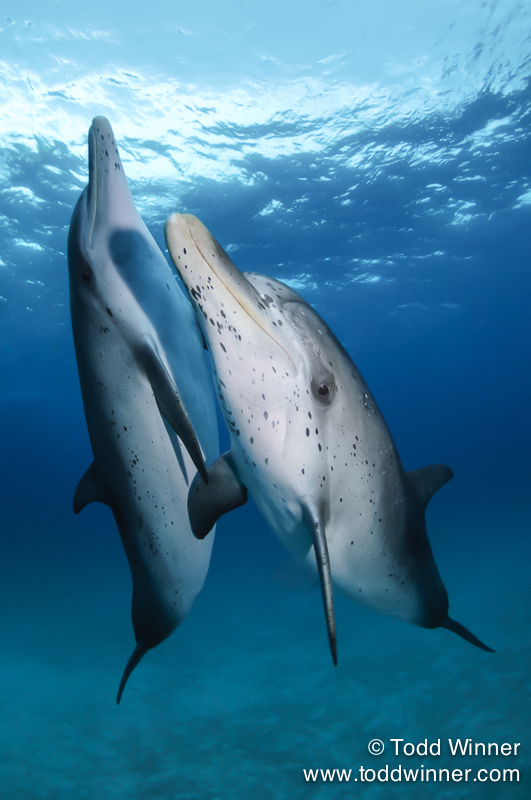 Pair of Atlantic spotted dolphins. Bahamas[/caption]
Pair of Atlantic spotted dolphins. Bahamas[/caption]
 Mantis Shrimp cleaning out its burrow. Catalina Island, California[/caption]
Mantis Shrimp cleaning out its burrow. Catalina Island, California[/caption]
Lower Strobe Power For Shooting Fast Action Underwater Photography
Most strobes take at least two seconds to recycle after a full flash, so by setting your strobes to a lower power setting you will be able to shoot a lot faster. If you're not getting enough strobe light with the lower settings, go ahead and increase your ISO. If you're shooting with an internal pop-up flash you will have to wait for the internal strobe to recycle. If you find that you're spending too much time waiting for the internal flash to recycle you can switch to electronic sync cords, a fiber trigger like the Nauticam flash trigger, or shoot manual strobes and set your internal flash to the lowest power setting. [caption id="attachment_2522" align="aligncenter" width="600"] Shark Handler putting a blue shark into tonic immobility, California[/caption]
Continuous Shutter Setting your camera to take multiple images as you hold the shutter release down can give you a slight advantage when shooting fast action. As long as your strobes are set to a lower power they should be able to keep up with at least a few shots. Many cameras have both a high and low setting for continuous shutter. I find the low setting to be fast enough for most underwater shooting scenarios. Another advantage is that many strobes tend to still fire even if they have not completely recharged, but at a lower output, so you also get a bit of strobe bracketing by using this method.
[caption id="attachment_2516" align="aligncenter" width="430"]
Shark Handler putting a blue shark into tonic immobility, California[/caption]
Continuous Shutter Setting your camera to take multiple images as you hold the shutter release down can give you a slight advantage when shooting fast action. As long as your strobes are set to a lower power they should be able to keep up with at least a few shots. Many cameras have both a high and low setting for continuous shutter. I find the low setting to be fast enough for most underwater shooting scenarios. Another advantage is that many strobes tend to still fire even if they have not completely recharged, but at a lower output, so you also get a bit of strobe bracketing by using this method.
[caption id="attachment_2516" align="aligncenter" width="430"] Blue Spot Jawfish Feeding[/caption]
Big Fast Memory Cards If you're worried about filling up your memory card you definitely need one with a larger capacity. How large will ultimately depend on your camera and shooting style. I typically use 32G cards with my Canon 5D Mark III. When you first take an image the file is stored in the cameras buffer, by using memory cards with a fast read and write speed your camera can clear the buffer faster so you can continue to shoot. They also make downloading to your computer much faster.
[caption id="attachment_2518" align="aligncenter" width="600"]
Blue Spot Jawfish Feeding[/caption]
Big Fast Memory Cards If you're worried about filling up your memory card you definitely need one with a larger capacity. How large will ultimately depend on your camera and shooting style. I typically use 32G cards with my Canon 5D Mark III. When you first take an image the file is stored in the cameras buffer, by using memory cards with a fast read and write speed your camera can clear the buffer faster so you can continue to shoot. They also make downloading to your computer much faster.
[caption id="attachment_2518" align="aligncenter" width="600"] Octopus fight[/caption]
Multiple Autofocus Points When you're shooting larger subjects like sea lions or dolphins in clearwater, try using multiple autofocus points. It's not as precise as using a small focus point but it can be much faster. I recommend using the largest autofocus selection that will get the job done. Start with one of the wider AF selections and move to increasingly smaller ones until you find one that is working well for the shooting situation. For macro, I prefer to use a single focus point most of the time.
[caption id="attachment_2521" align="aligncenter" width="430"]
Octopus fight[/caption]
Multiple Autofocus Points When you're shooting larger subjects like sea lions or dolphins in clearwater, try using multiple autofocus points. It's not as precise as using a small focus point but it can be much faster. I recommend using the largest autofocus selection that will get the job done. Start with one of the wider AF selections and move to increasingly smaller ones until you find one that is working well for the shooting situation. For macro, I prefer to use a single focus point most of the time.
[caption id="attachment_2521" align="aligncenter" width="430"] Pair of Atlantic spotted dolphins. Bahamas[/caption]
Pair of Atlantic spotted dolphins. Bahamas[/caption]





